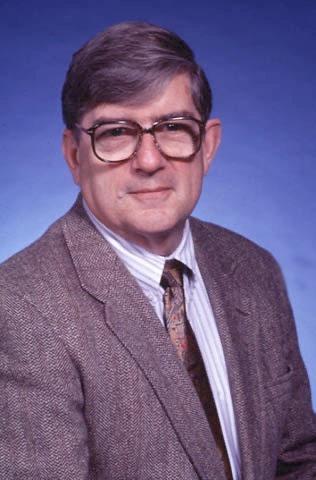Main navigation
Researched and Written by
Dr. Fred Dee

In 1980 the with the retirement of George Penick the institution began a search for a new chair who would maintain the excellence in education and service developed over the previous decade, while at the same time markedly expanding the research activities of the department. This search culminated in the appointment of Richard G. Lynch, MD, a graduate of the University of Rochester with postgraduate training at Washington University in St. Louis. Dr. Lynch came to Iowa as a very well established investigator with national and international recognition in immunology research.
To facilitate the desired expansion in research in the department considerable new space was needed. Along with the appointment of Dr. Lynch a plan was instituted to relocate the majority of the clinical laboratories to 40,000 square feet of newly constructed space in the Roy J. Carver Pavilion. This freed up much needed research space in the Medical Laboratories and MRC. During the early years the department developed the Critical Care Lab and later negotiated with UIHC to acquire space for the Surgical Pathology Gross Room/Frozen Section Lab, the Cytology and Hematology Space in the Cancer Center, and the Stem Cell /Bone Marrow Transplant/Transfusion Medicine Lab that will go on the 2nd floor of General Hospital in the old Ophthalmology space.
After his arrival, Dr. Lynch immediately began recruiting faculty, adding four new faculty in Immunology. Other areas of research growth were identified including neuropathology and viral oncogenesis. Excellence in these areas was developed, and in the late 1990’s a focus on the biology of stem cells and cancer research, was also added. With the financial support of Mr. John Colloton, the Department purchased its first FACS instrument and renovated space in MRC to house the facility. Initially the facility was used for basic and clinical research, and to pilot the development of clinical tests; it was later used only for research activities. A few years ago a new FACS analyzer and cell sorter was obtained for the flow core lab. In addition, to the flow core lab, another important core lab was developed and was initially used by anatomic pathology faculty to develop clinically focused projects. The laboratory evolved to its present configuration and expanded menu of procedures, including molecular biology.
Recruiting was also dramatically increased during the Lynch years with expansion of the scope of the disciplines of Transfusion Medicine, Hematopathology, Microbiology and Cytopathology, and new faculty were also added in Surgical Pathology. This recruiting resulted in an increase in faculty numbers from ~20 in 1980 to ~40 when he stepped down. These critical additions resulted in a markedly increased level of scholarly activity including publication, grants, and national visibility for the department.
Under the leadership of Dr. Lynch the quality of the residency program was maintained. Also with financial support from the department in the 1980’s, clinical fellowships flourished in Surgical Pathology, Hematopathology, Neuropathology, and Transfusion Medicine; and in the 1990’s in Cytopathology and Microbiology. These programs have trained numerous pathologists for the state of Iowa and the nation. Approximately one third currently hold positions in academic institutions.
The excellence in undergraduate education developed by Tom Kent was maintained and expanded under the leadership of Dr. Lynch, and is currently spear-headed by Fred Dee. In the 1990’s the space of the Pathology Learning Center was consolidated and remodeled with matching funds from the College of Medicine and the University. Dual headed microscopes were upgraded with multi-headed microscopes, and microscopes with monitors were added to small group rooms. Computerized assisted instruction was supported and an instructional designer was added to the staff. A computer classroom was added in the late 1990’s. Continued modernization of the resources of the PLC for students has markedly expanded the capabilities of the PLC, and has maintained the department's visibility as a leader in education in the College of Medicine.
The acquisition of space and new clinical laboratories in the hospital at the time of Dr. Lynch's arrival set the stage for continued expansion of cooperation and financial support from the hospital. Multiple small satellite laboratories previously controlled by clinical departments were incorporated into the Pathology laboratories. In the mid 1990’s, understanding that the cost containment, forced by the emerging paradigm of managed care, would be of major importance, the department took a proactive stance and undertook a major reorganization of the clinical laboratories, including a decrease in middle management positions and consolidation of existing laboratories. In the late 1990’s, new outreach initiatives were undertaken to maintain the economic viability of the laboratories. These initiatives have set the stage for continued financial viability of the laboratories, and support of the mission of the department into the next decade.
Sometime in 1982 Emory Warner came to see Dr. Lynch, and with financial support from him, his family and friends and some of his long-term research collaborators, the Warner Fellowship was initiated. It was geared towards medical students taking a year out to do research. Finally, Dr. Lynch, with the help of Kent Bottles, then the Interim Head, was also instrumental in establishing the Department’s first endowed Professorship in honor of Dr. Fred Stamler. The Professorship was held in 2004-2010 by Frank Mitros and Dr. Barry Young in 2011.